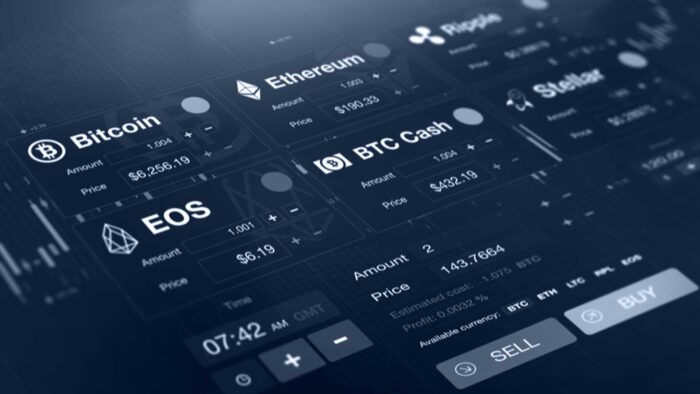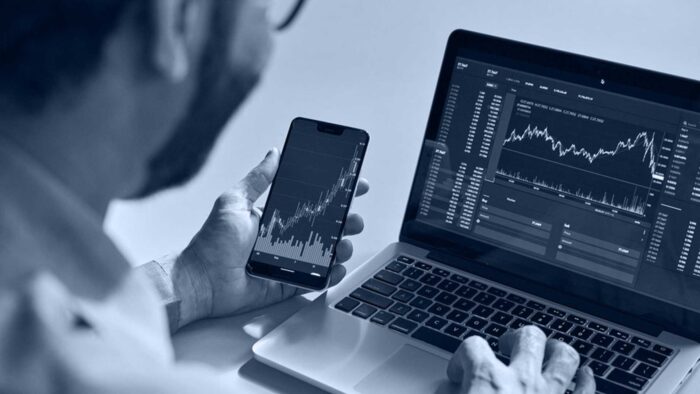BCB Group - Guides - An Introduction to Cryptocurrency and FX Markets

An Introduction to Cryptocurrency and FX Markets
The markets for currency trade and exchange have matured significantly, with digital transformation completely changing the way the world approaches trading and transactions. The cryptocurrency landscape is relatively new, and as a result, there are not a lot of factors that can cause price changes. The fact that cryptocurrencies have been designed as decentralised assets, free from any government/bank control, things like rate changes, political factors, data releases, etc. don’t quite affect them as much as fiat currencies and the forex trading market, consequently. There are many parallels between forex and cryptocurrency markets, such as the fact they both deal in currencies, are fast-paced and volatile, and both rely on modern-day communications technology in order to operate. If you’re looking to enter the digital asset and Forex space, it’s important that you’ve got all of the information and the right tools to support you; investors and traders who are well-educated on the markets and their fluctuations can make the best trading decisions. Here at BCB Group, it’s our vision to make the world more financially inclusive, and we provide institutions with a secure gateway into FX and cryptocurrency markets via our suite of tools and platforms that help our customers to leverage their positions, capitalise on the markets, and make decisions with confidence.
To help you understand more about the products and services that we offer here at BCB Group, we’ve put together a complete guide to the FX and cryptocurrency markets. We encourage you to read on to learn how you could start to operate in new digital markets, or more effectively in your current preferred markets, with the help of BCB solutions. If you need any assistance or support, don’t hesitate to get in touch with our crypto banking experts today to understand how we can help you manage executions of large manual orders via our world class trading team.
WHAT IS FX TRADING?
The foreign exchange market, also known as FX or Forex, is a market where national currency is converted and traded between entities. This takes place over the counter (OTC) through the interbank market, instead of on a centralized exchange. The Foreign Exchange market deals in international government-issued currencies, is open 24 hours a day, five days a week, and consists of decentralized, over-the-counter trading. There are many reasons why individuals or institutions may choose to engage in this activity, but the two main angles are practicality and profit. The FX market is one of the most actively traded markets in the world on all fronts, including sole trading, company-level exchange, as well as major institutions and banks involved in Forex trading. It’s estimated that over $6.5 trillion worth of FX transactions take place every day, which shows the scale of the foreign exchange market within the global economy, as the largest and most liquid financial market in the world. Of course, there are lots of technical processes that you need to understand before you start to enter the FX trading markets, with lots of complex strategies and protocols in place to ensure that every trade/transaction is safe and secure. Below, we’ve detailed some of the most important things to consider when looking to enter FX trading.
UNDERSTANDING FOREX PAIRS
If you have any experience in foreign exchange trading, you’ll likely have already encountered Forex pairs; a Forex pair is essentially a combination of two currencies that can be traded against each other on the FX market. There are hundreds of different pairs that can be traded against each other, but in most cases, you’ll find that there are a few pairs that tend to be used most frequently due to their stable nature. Some of the most popular Forex pairs are Euro against the US dollar (EUR/USD), US dollar against Japanese Yen (USD/JPY), and the British pound against the US dollar(GBP/USD).
When looking at the Forex pairs, there will always be a base currency and a quote currency – the base is the currency that is equal to 1, whereas the quote currency will show how much it’ll cost to buy one of the base currencies using the quote currency. When trading FX, you’ll always be purchasing one currency using another, so understanding the way that pairs function is vital. When viewing a Forex pair, the base will always be on the left, with the quote on the right.
Here is an example of how a Forex pair and its exchange rate may be displayed:
GBP/USD = 1.38948
In this scenario, it would cost 1.38948 US dollars to purchase one British pound, which showcases that the dollar holds a higher price against the pound. Movement in the 4th decimal place by a value of 1 is referred to as a “pip” unless trading with the Japanese Yen, in which case this will be the phrase used for movement in the 5th decimal place. Movement in the 5th decimal place in all other currencies is referred to as a “pipette”.
One thing that you’ll need to be clear of in FX trading is the purpose of “lots”, which are the batches of currency that you’ll be using when making a trade. As the value difference between most major currencies is minor and the price movements are equally as small, there is very little value in providing support for smaller trades, as there will be very few gains to be made from transactions of this size. To help create a standardised protocol for Forex trading, most markets will have set lots to purchase, which are commonly found in the value of 100,000 of whichever currency you are purchasing. This would mean you’ll be able to purchase 100,000 lots of £1 using the Euro as your trading currency – for example.
To make things easier for traders to identify, each currency has its own code identification that enables you to quickly identify each currency in a pair, so that you can make quicker decisions when it comes to buying and selling currency. You can find some of the most popular currencies and their associated code below:
- EUR – Euro.
- USD – US dollar.
- GBP – British pound or pound sterling.
- AUD – Australian dollar.
- CAD – Canadian dollar.
- MXN – Mexican peso.
- NZD – New Zealand dollar.
- HKD – Hong Kong dollar.
- CNH – Chinese renminbi.
- CHF – Swiss Franc.
- TRY – Turkish lira.
- JPY – Japanese yen.
- SEK – Swedish krona.
- KRW – South Korean won.
As you can see, the code for each currency is closely related to that of the nationality that is native to, which adds to the ease of use that this system provides. A few further examples of terms that you’ll need to understand before you start to enter the foreign exchange markets are:
“Spread”: In Forex, the spread is the value difference between the buy price and the selling price. As an example, if you’ve bought currency at 1.3555, but sell it at 1.3554, you’d have made a loss on each unit of the currency that you have bought. In general, you’ll want to buy a currency that you anticipate seeing a rise in price for, and you’ll look to sell a currency that you are expecting to fall in value.
“Margin”: The margin and leverage are very closely related, but do refer to different aspects of a trade. Your margin is the initial deposit that you’ll have to commit in order to open up a leveraged position and maintain it.
“Leverage”: Leverage is a process that allows you to use a deposit, the margin, to give you increased exposure to an underlying asset. In Layman’s terms, you’ll only need to put down a small fraction of the full trade value, with your provider loaning you the rest of the value.
“Scalping”: This is the most short-term form of trading and is used to gain quick wins whilst limiting the risk associated with your trades. These will be positions that are opened and closed very quickly, looking to make small profits as the value of the asset rises before it begins to fall again.
“Day trading”: Another short-term trading method, day trading is the process of opening and closing a trade within the space of a single day. This is again a way to limit risk whilst searching for quick gains on volatile currencies.
“Swing trading”: Swing trading is a mid-term trading method where positions are held for longer than when scalping, but not quite as long as you would in position trading. When operating a swing trading strategy, you’d be looking for highs and lows in the market, then placing trades in anticipation of a reversal in price.
“Trend trading”: Trend trading is a slightly more long-term method that looks to play things slightly safer by following trends and joining well-established assets for long-term gains. These positions tend to have much less risk but will take far longer to present any real wins in most cases.
“Position trading”: The most long-term vision you can take is that of position trading, which is the process of setting up a position very early when prices are low, then holding these assets for a very long time. You could hold these positions for weeks, months, or years in some circumstances. Whilst it can be a slow-burner, this method is one of the greatest ways to make substantial gains in almost every trading market.
Our expert team has significant experience when it comes to FX trading, Forex pairs, and market insight, so if you’d like to access our high touch and high tech service for trading FX be sure to get in touch with our team today. We offer the best execution and seamless daily settlement in all major world currencies and cryptocurrencies. Our secure trading channels include a web app, encrypted voice and text channels and an industry-leading API covering live pricing, trading and reporting and we support a wide range of order types including OTC orders, electronic RFQ and algorithmic exchange orders.
WHAT IS AN EXCHANGE MARKET FOR CRYPTOCURRENCY?
As the ecosystem for digital assets has matured, the process of buying and selling cryptocurrencies has become increasingly user-friendly. Trading crypto is fairly similar to trading equities and other asset classes, with two major differences: trading platforms and crypto storage. For businesses in the crypto and digital asset space, it’s vital that you’re capitalising on market movement and gaining the strongest positions possible, as this is the greatest way to ensure stability and growth for the future of your company. For this reason, you need to ensure that you have a full understanding of the market and the factors that may impact it as you’re looking to make trades.
A crypto exchange is a platform for buying and selling cryptocurrencies. In addition to trading services, cryptocurrency exchanges also offer price discovery through trading activity, as well as storage for crypto. Before crypto exchanges, people were only able to acquire cryptocurrency through mining or by organizing transactions in various online and offline forums. Today, there are hundreds of crypto exchanges offering an array of digital assets and varying levels of security and associated fees. It’s up to you to find the exchange and digital assets that suit your particular needs, price range, and security expectations. Bitcoin, Ethereum, and XRP are 3 of the most prominent cryptocurrencies that are traded on the markets, but they are far from the only digital assets that are exchanged, so there are lots of opportunities to identify early potential positions for new digital currencies as they enter the market after development. In many ways, there are striking similarities with stock exchanges when it comes to the crypto market, however, the biggest difference is the way that share profit is actually made. With stocks, the profit will usually be made as a result of selling your shares at changing rates regularly, whereas, with crypto, we see traders using a variety of different cryptocurrency pairs to profit from the extremely volatile currency rates which can change rapidly in the cryptocurrency market. Another major difference is the working hours for the cryptocurrency exchange industry, which are 24/7/365 – there’s no off days, meaning you’re able to trade at any time, from any location. Cryptocurrency exchanges match buyers with sellers. As with a traditional bank account, if you want to buy and sell on most cryptocurrency exchanges, you first need to register. Once you complete the KYC process and have been authenticated, your account is opened and you can transfer funds (fiat or digital currency) onto the platform, which you can then use to make purchases. To ensure that you’ve always got support on hand, we ensure that we’ve got members of our team available for assistance.
Due to the rapidly evolving nature of the industry, security is one of the major priorities here at BCB Group, which is why we’re enforcing regulator-friendly ‘Know Your Customer’ (KYC) checks to ensure that each buyer, seller, and trader is verified before a transaction is made. This protects our clients, our markets, and your positions within that too. In addition to this, our KYC protocols enable us to further our work when it comes to anti-money laundering measures, which is another major priority for the team here at BCB Group. Our policies on these matters are strict and robust, and will always remain within industry guidelines to ensure that all of our clients and their assets are protected around the clock.
BCB GROUP BENEFITS AND GET IN TOUCH TODAY
When you choose BCB Group as your partner for Forex and business trading, you’re choosing to have access to the most well-established and securely managed markets in the industry, so that you can buy, sell, and trade with complete confidence and security. Our BCB business accounts make it easier than ever for your business to handle digital assets and cryptocurrency, with live-feed information displayed in our online web portal 24/7, so you are able to trade FX, cryptocurrencies, stablecoins and other digital assets quickly and at scale, and our integrated market liquidity services empower seamless cross-currency and cross-asset transfers.
With the bonus of instant settlements thanks to our industry-leading BLINC payment network, you can be sure that you’ve got an elite-level trading and business banking platform that puts you in the best possible place to capitalise on the ever-evolving digital asset market. When it comes to cryptocurrency, you can be sure that you’ve got access to the most competitive spreads on the market. This will give you the ideal position to be able to make substantial gains on large-scale cryptocurrency trades.
Now that you’ve got all the information you need to get involved with digital asset markets, it’s time to start your trading and business banking journey here at BCB. You can contact our team to discuss our processes and accounts today by filling out our contact form, which can be found here. Once you’ve submitted your details, a member of our experienced team will be in touch to discuss your needs and goals with you, so we can ensure that we’re providing the best possible outcome for your requirements, when operating in FX, cryptocurrency, and fiat markets.
For more information on the other services that are available within the BCB Group suite, you can head over to our treasury, BLINC, and wealth partners pages where we discuss these services in detail. Alternatively, if you’d like to keep up to date with the latest industry news, you can head over to our ‘Insights’ page where you can find frequent updates and roundups of everything that’s happening at BCB Group or the wider industry.







